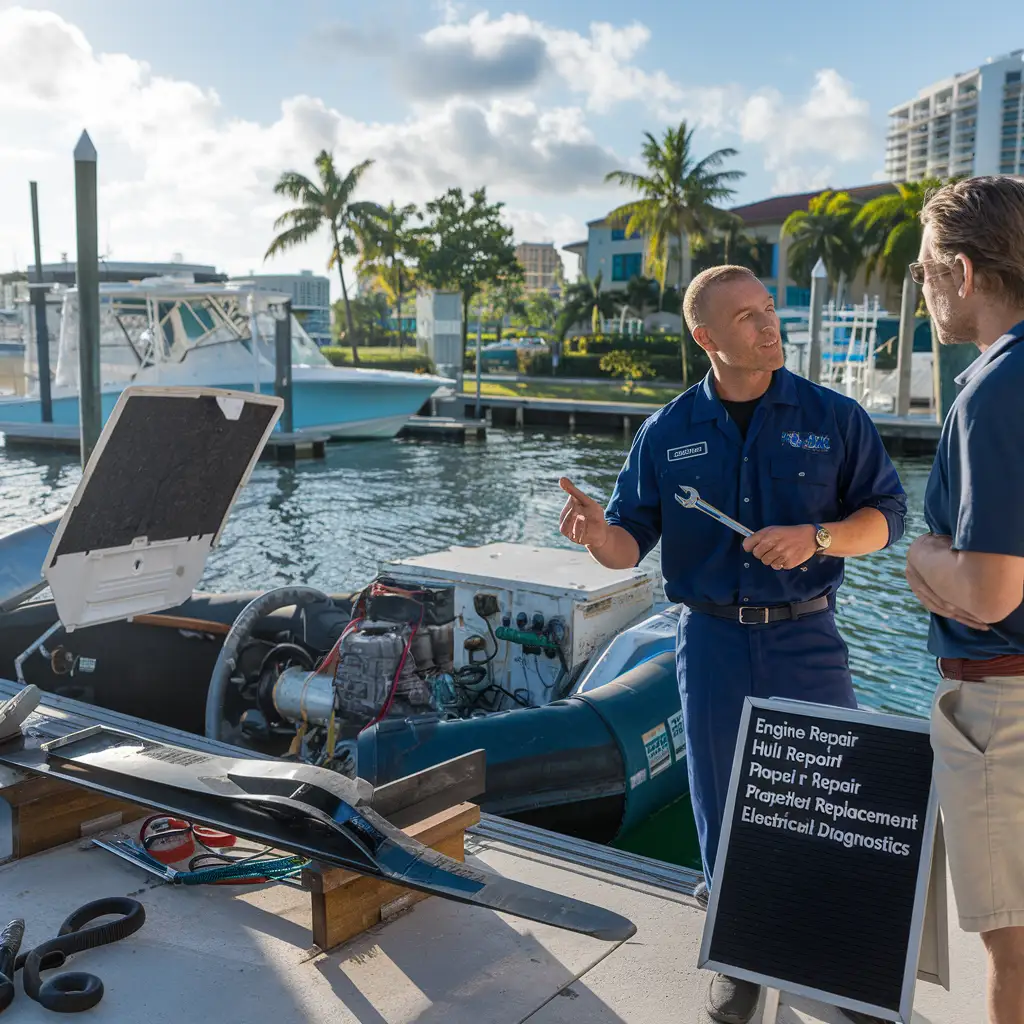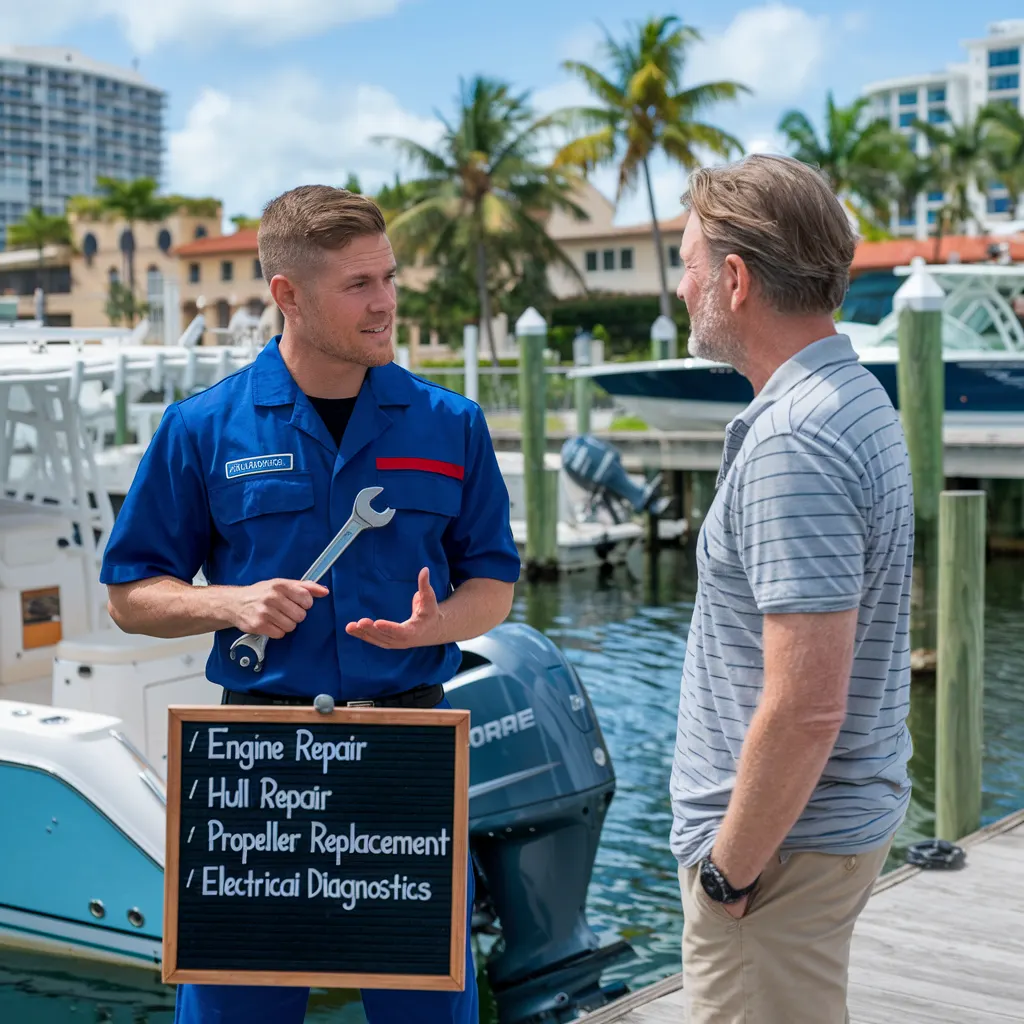Common Types of Boat Repairs in Miami 2025, FL
April 7, 2025 |
By Ali

Miami’s vibrant boating culture means that boat repairs are a common need for many local enthusiasts. Whether you’re out on Biscayne Bay or exploring the coastal waters, keeping your boat in top shape is crucial. This article highlights the common types of boat repairs in Miami, ensuring you know what to look for when it comes to maintenance and service.
Key Takeaways
- Regular engine maintenance is vital for performance.
- Fiberglass repairs can restore your boat’s appearance and integrity.
- Electrical system upgrades can enhance safety and functionality.
- Routine cleaning and detailing keep your boat looking sharp.
- Emergency repair services are essential for quick fixes when you’re in a bind.
Engine Repair Services
Engines are the heart of any boat, and keeping them in top shape is super important, especially with the harsh marine environment here in Miami. Saltwater, humidity, and constant use can really take a toll. Regular maintenance and timely repairs can save you a lot of headaches (and money) down the road.
Whether you’ve got an outboard or an inboard, knowing what to look for can help you catch small problems before they turn into big ones.
Outboard Motor Maintenance
Outboard motors are super common on smaller boats around here. They’re relatively simple to work on, but they still need regular attention. Think about things like changing the oil, checking the spark plugs, and making sure the cooling system is working right. A lot of people forget about the impeller, but that’s a big one – if it goes bad, your engine can overheat real quick.
Also, don’t forget to flush the engine with fresh water after every use, especially if you’re boating in saltwater. This helps prevent corrosion and keeps everything running smoothly. For outboard servicing, make sure to find a certified technician.
Inboard Engine Diagnostics
Inboard engines are a whole different ballgame. They’re more complex than outboards, and diagnosing problems can be tricky. If your engine is making weird noises, losing power, or overheating, it’s time to get it checked out. A good mechanic will use diagnostic tools to figure out what’s going on, whether it’s a fuel system issue, a problem with the ignition, or something else entirely. Regular inboard engine repair is key to avoiding major breakdowns.
Routine Tune-Ups
Think of a boat engine tune-up like getting your car serviced. It involves checking all the vital components, replacing worn parts, and making sure everything is running efficiently. This includes things like:
- Checking and replacing spark plugs
- Changing the oil and filters
- Inspecting the fuel system
- Adjusting the timing
Regular tune-ups not only keep your engine running smoothly but also improve fuel efficiency and extend its lifespan. It’s a small investment that pays off big time in the long run.
By keeping up with these simple maintenance tasks, you can avoid a lot of common boat engine problems and keep your boat running strong for years to come.
Fiberglass Repair Techniques
Fiberglass damage is just part of owning a boat, especially if you’re out on the water a lot. Whether it’s from bumping the dock or just general wear and tear, those dings and cracks can really add up. Luckily, most fiberglass issues are fixable, and you don’t always need to haul your boat to a shop. Let’s look at some common fiberglass repairs in Miami.
Surface Touch-Ups
Got a scratch that’s bugging you? Surface touch-ups are usually pretty straightforward. These are the kind of repairs you can often handle yourself with a little patience. You’ll typically start by cleaning the area, then applying a gel coat or a specialized fiberglass filler. Sanding it down smooth and polishing it up makes it blend right in. It’s all about taking your time and matching the color correctly.
Crack and Hole Repairs
Cracks and holes are a bit more involved than simple scratches. The key here is to address them quickly before water gets in and causes bigger problems. The process usually involves:
- Grinding down the damaged area to create a clean surface.
- Applying layers of fiberglass cloth and resin to rebuild the structure.
- Sanding and fairing to achieve a smooth, even finish.
- Finally, applying a gel coat to match the surrounding area.
It’s important to properly prepare the surface and use the right materials for a lasting repair. If the damage is extensive, it might be best to consult a pro. They’ll have the experience to ensure the repair is structurally sound and looks great.

Gel Coat Restoration
Over time, the gel coat on your boat can fade and oxidize, making it look dull. Gel coat restoration brings back that shine. This usually involves a few steps:
- Wet sanding to remove the oxidized layer.
- Buffing to smooth out the surface.
- Polishing to bring back the gloss.
- Waxing to protect the finish.
With the right products and a little elbow grease, you can make your boat look like new again. For more serious damage, consider professional fiberglass repair to ensure a lasting fix.
Electrical System Upgrades
Okay, so your boat’s electrical system is acting up? Or maybe you’re just looking to modernize things a bit? Either way, you’ve come to the right place. Electrical upgrades are a pretty common thing around here, especially with the saltwater and humidity doing their best to corrode everything. I remember last summer, my buddy’s boat had a complete electrical meltdown mid-trip – not fun. Let’s talk about some of the upgrades we see most often.
Wiring Troubleshooting
First off, let’s talk about wiring. Old wiring is a recipe for disaster. It gets brittle, corroded, and can cause all sorts of problems, from minor annoyances to full-blown electrical fires. Troubleshooting involves tracing wires, checking connections, and making sure everything is properly insulated. It’s tedious work, but super important.
A good electrician will use a multimeter to check for voltage drops and continuity, pinpointing the exact location of the problem. If you’re experiencing flickering lights, intermittent power, or strange readings on your gauges, it’s time to get your wiring checked out. You might need a complete rewiring if the damage is extensive.
Battery Replacement
Batteries, batteries, batteries. They’re the heart of your boat’s electrical system, and they don’t last forever. Over time, they lose their ability to hold a charge, especially if they’re not properly maintained. When choosing a new battery, consider the type of battery (lead-acid, AGM, lithium), its cold cranking amps (CCA), and its reserve capacity (RC). Also, make sure it’s a marine-grade battery designed to withstand the harsh conditions of boating.
I usually recommend getting a slightly larger battery than you think you need – it’s better to have extra power than to be stranded with a dead battery. Here’s a quick guide:
- Check the battery’s voltage regularly.
- Keep the terminals clean and corrosion-free.
- Use a battery maintainer during the off-season.
Lighting Enhancements
Finally, let’s talk about lighting. Upgrading your boat’s lighting can improve safety, visibility, and aesthetics. LED lights are a popular choice because they’re energy-efficient, long-lasting, and available in a wide range of colors and styles. You can add underwater lights to attract fish, deck lights to improve visibility at night, or interior lights to create a more comfortable and inviting atmosphere. Just make sure you choose marine-grade lights that are designed to withstand the elements. Proper lighting is key for night navigation.
Boat Cleaning and Detailing
Let’s be real, nobody wants a dirty boat. Especially not in Miami, where you’re trying to impress everyone as you cruise around. Keeping your boat clean isn’t just about looks, though. It’s about protecting your investment and making sure it lasts. Think of it like washing your car – you wouldn’t let it sit covered in salt and grime, would you? Same goes for your boat.
Regular cleaning prevents corrosion, keeps the gel coat looking good, and makes your time on the water way more enjoyable. Plus, who wants to hang out on a boat covered in bird droppings?
Interior Cleaning Services
Okay, so the outside of the boat is sparkling, but what about the inside? Interior cleaning is where things can get tricky, especially if you’ve got a lot of nooks and crannies. We’re talking about everything from wiping down the upholstery to scrubbing the head (that’s the bathroom, for you landlubbers). A good interior cleaning will get rid of mildew, salt stains, and that weird fishy smell that seems to linger no matter what you do.
Here’s a quick checklist:
- Vacuum carpets and upholstery
- Wipe down all surfaces with a marine-grade cleaner
- Clean and disinfect the head
Hull Polishing Techniques
Polishing the hull is like giving your boat a spa day. It removes oxidation, which is that chalky, faded look that happens over time. Polishing brings back the shine and makes your boat look like it just rolled off the showroom floor. It’s a bit of work, but totally worth it. You’ll need a good buffer, some polishing compound, and a whole lot of elbow grease. Or, you know, you could just hire someone to do it for you.
Waxing and Sealing
Waxing and sealing is the final step in the boat cleaning process. Think of it as the topcoat for your manicure. Waxing adds a layer of protection against the sun, salt, and other elements that can damage your boat’s finish. It also makes it easier to clean in the future, because dirt and grime won’t stick as easily. Regular boat cleaning services in Miami are a must to keep your boat in tip-top shape.
A good coat of wax can make all the difference in how your boat looks and how long it lasts. It’s a small investment that pays off big time in the long run. Plus, there’s nothing quite like seeing your boat gleaming in the sun after a fresh wax job.
Propeller Maintenance and Replacement
Your boat’s propeller is essential for performance, and keeping it in good shape is super important. Ignoring propeller issues can lead to decreased speed, poor fuel efficiency, and even damage to your engine. Let’s dive into what’s involved in keeping your prop in top condition.
Propeller Adjustments
Sometimes, your propeller might not be performing as it should, even without visible damage. Adjustments can involve:
- Pitch adjustments: Changing the angle of the blades to optimize for speed or power.
- Balancing: Ensuring the propeller is evenly weighted to reduce vibration.
- Cupping: Modifying the blade tips to improve grip and reduce cavitation.
These adjustments can significantly improve your boat’s performance and fuel economy. It’s a good idea to consult with a professional to determine the best adjustments for your specific boat and engine.

Damage Assessments
Regularly checking your propeller for damage is a must. Look for:
- Dents and bends
- Cracks
- Missing pieces
Even small imperfections can affect performance. A professional damage assessment can identify hidden problems and recommend the best course of action. Ignoring damage can lead to more serious issues down the line.
Installation of New Propellers
Sometimes, repair isn’t enough, and you need a new propeller. Choosing the right propeller is crucial. Consider:
- Material: Aluminum, stainless steel, and composite options are available.
- Size and pitch: These must match your boat’s engine and hull.
- Number of blades: More blades offer better thrust, while fewer blades can increase speed.
Getting the right propeller installed can make a huge difference in your boat’s performance. It’s not just about replacing the old one; it’s about optimizing for your specific needs.
Proper installation is just as important as choosing the right propeller. Make sure it’s done correctly to avoid any issues. If you are looking for engine and drive replacements, consider all options.
Upholstery and Canvas Repairs
Boat interiors take a beating from the sun, salt, and constant use. Over time, seats crack, canvas tears, and bimini tops fade. Luckily, these issues are usually fixable, bringing new life to your boat’s comfort and appearance. I’ve seen some pretty rough looking boats get a total makeover with some new upholstery and canvas work.
Seat Reupholstering
Reupholstering your boat seats can make a huge difference. It’s not just about looks; it’s about comfort too. Old, cracked vinyl can be really uncomfortable on a hot day. Plus, if the foam underneath is deteriorating, you’re not getting the support you need. There are tons of marine-grade materials to choose from these days, so you can really customize the look and feel of your boat.
Canvas Replacement
Canvas covers, enclosures, and dodgers are essential for protecting your boat’s interior from the elements. But they don’t last forever. Sun, wind, and salt can really wear them down. Replacing worn-out canvas can prevent further damage to your boat and make it more enjoyable to use. Think about it, a new canvas can really improve the look of your boat. If you are looking for interior solutions, there are many options available.
Bimini Top Repairs
Bimini tops provide much-needed shade on sunny days, but they’re also prone to damage. The fabric can tear, the frames can bend, and the straps can break. Repairing or replacing your bimini top is important for both comfort and safety. A ripped bimini flapping in the wind isn’t just annoying; it can also be dangerous.
Keeping your boat’s upholstery and canvas in good shape is a smart investment. It not only improves the look and feel of your boat but also protects it from the elements, extending its lifespan and maintaining its value.
Emergency Repair Services
Stuff happens, right? You’re out on the water, enjoying a beautiful Miami day, and suddenly, something goes wrong. That’s where emergency repair services come in. It’s not just about fixing things; it’s about getting you back to safety and preventing a small issue from becoming a huge disaster.
On-Site Repairs
Imagine this: you’re miles from shore, and your engine decides to quit. On-site repair services are like having a pit crew for your boat. They come to you, wherever you are, to diagnose and fix the problem. This can save you a ton of time and hassle compared to waiting for a tow back to the marina. They usually have a mobile workshop, so they can do a lot of repairs right there.
Quick Response for Critical Issues
Time is of the essence when something goes wrong on the water. A quick response can make all the difference. These services prioritize emergency calls, understanding that a delay could lead to more damage or even put people at risk. They’re geared up to handle urgent situations, like engine failures, hull breaches, or electrical problems that could leave you stranded.
Preventative Maintenance
Okay, so this might seem counterintuitive under “emergency services,” but hear me out. Regular preventative maintenance is the best way to avoid needing emergency repairs in the first place. Think of it as an ounce of prevention being worth a pound of cure.
By keeping up with routine checks and servicing, you can catch potential problems before they become emergencies. This includes things like checking fluid levels, inspecting hoses and belts, and making sure your electrical system is in good shape. It’s like a regular check-up for your boat, ensuring it’s always ready to go.
Here’s a simple maintenance schedule to consider:
- Monthly: Check fluid levels, inspect hoses.
- Quarterly: Battery check, visual inspection of wiring.
- Annually: Full engine service, hull inspection.
Conclusion: Familiar Types of Boat Repair In Miami
So, there you have it. Boat repairs in Miami can cover a lot of ground, from fixing engines to tackling fiberglass issues. The heat and saltwater here can really do a number on your boat, so keeping up with repairs is key. Whether you’re dealing with a small leak or a major engine problem, it’s smart to get things checked out sooner rather than later. Regular maintenance can save you a ton of hassle down the line.
If you ever find yourself in need of help, don’t hesitate to reach out to a local repair shop. They know the ins and outs of keeping boats in top shape around here. Happy boating!
Frequently Asked Questions
How often should I get my boat checked in Miami?
You should have basic checks every month and a full service every 3 to 4 months, depending on how much you use your boat.
What makes boat repairs in Miami unique?
The salt water and sun can cause special problems, so repairs need to focus on stopping corrosion and UV damage.
How much do boat repairs usually cost?
Repair costs can vary. Small fixes may cost a few hundred dollars, while bigger repairs can be more expensive. Regular maintenance can help avoid large bills.
What types of engine repairs are common?
Common engine issues include overheating, especially from clogged cooling systems, which need quick fixes to prevent bigger problems.
What should I look for in a boat repair shop?
Check if the shop has certifications, experience with your type of boat, and mobile repair options. Good warranties are also important.
How can I keep my boat in good shape?
Regular cleaning and maintenance can help your boat last longer. Monthly cleaning services can prevent salt damage and keep everything working well.

Ali
Ali Hassan is a seasoned SEO content writer with over 10 years of experience in crafting high-performing content for WordPress websites. Specializing in keyword-rich blog posts, landing pages, and service descriptions, Ali blends technical SEO knowledge with engaging storytelling to drive organic traffic and improve search engine rankings.

